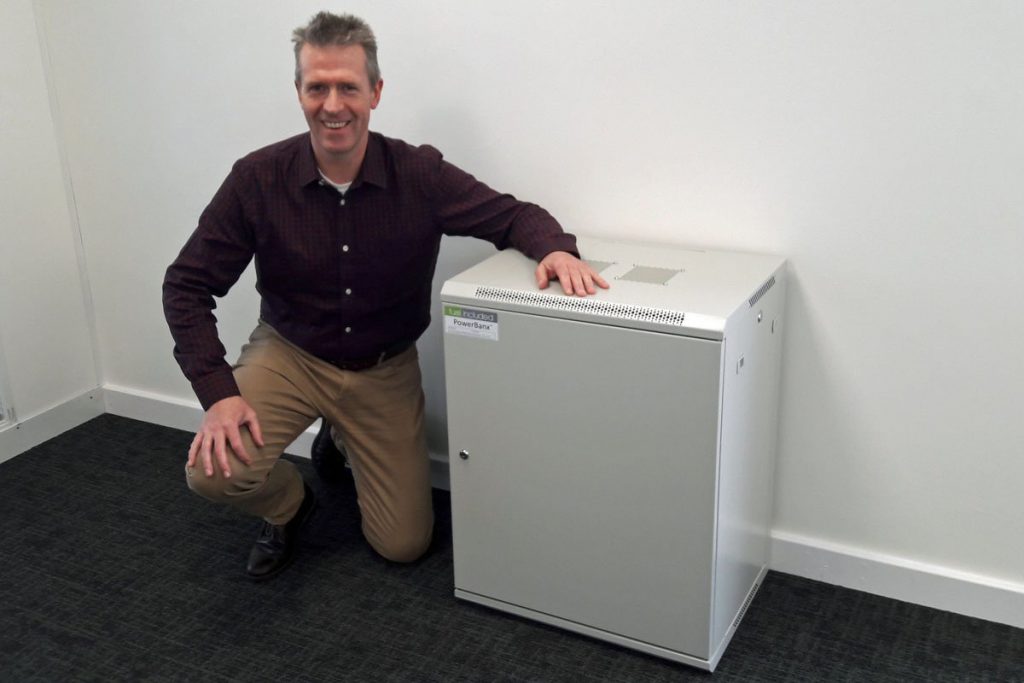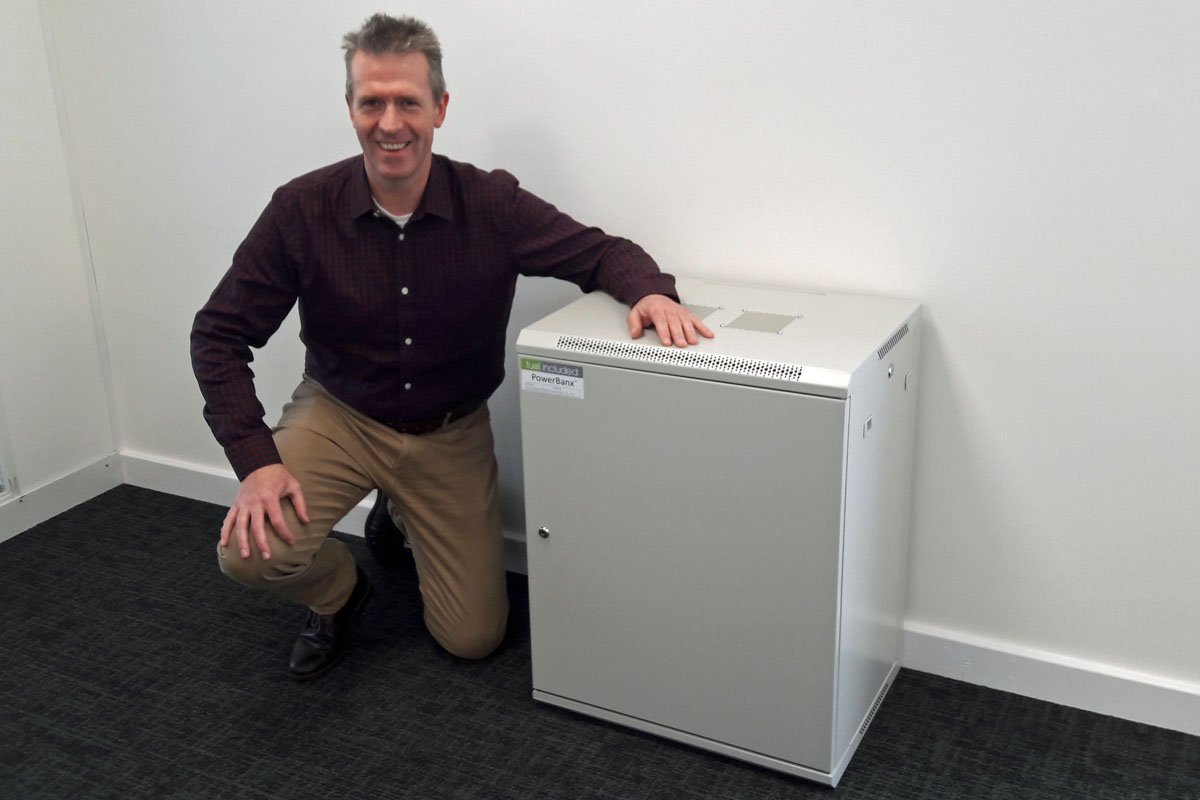The international market for stationary battery storage systems (BSS) is growing rapidly.
Within less than a decade, grid-connected BSS have evolved from a niche product to a mass market in which today international energy and automotive companies are competing for market shares. According to a recent study by BloombergNEF, almost 4GW of new battery storage systems went online in 2018 worldwide – and the market researchers expect this number to double by 2020. Accordingly, the International Renewable Energy Agency (IRENA) predicts that a total storage capacity of up to 420GWh will be installed by 2030.
Grid-connected storage systems today are used for a multitude of purposes, ranging from small-scale applications, such as residential home storage systems, to multi-megawatt batteries that provide balancing services and mitigate grid congestion problems on all voltage levels.

Tanjent’s PowerBanx X battery storage, in pale grey enclosure (Image: Tanjent)
In this article, we will cover the three main market segments of stationary storage systems in Europe – private households, commercial buildings and storage for balancing services – and shed some light on the business models and profitability of these systems.
Home storage systems
Over the last five years, more and more households have adopted battery storage in combination with photovoltaic systems. These so-called home storage systems (HSS) store excess solar energy during the day and make it available for self-consumption in the evening and at night. They provide a twofold benefit for the battery operator and the distribution grid: on the one hand, the operator of a HSS decreases the amount of electricity bought from the grid, thereby reducing his electricity bill. On the other hand, HSS can stabilise power grids with high amounts of renewable energy generation. By storing PV power during peak generation periods, local problems with voltage stability or thermal overloading of electric equipment can be mitigated.
Several studies have shown that the use of HSS can reliably limit the maximum feed-in of PV installations to just 40% of their rated power without curtailing undue amounts of renewable energy. This means that HSS can increase the maximum PV penetration of a given distribution grid by a factor of up to 2.5 without having to upgrade the electrical equipment. In some cases, HSS can also benefit from time-of-use schemes by offsetting higher tariffs at night and thus generate additional revenues.
Read more: Energy Storage News



